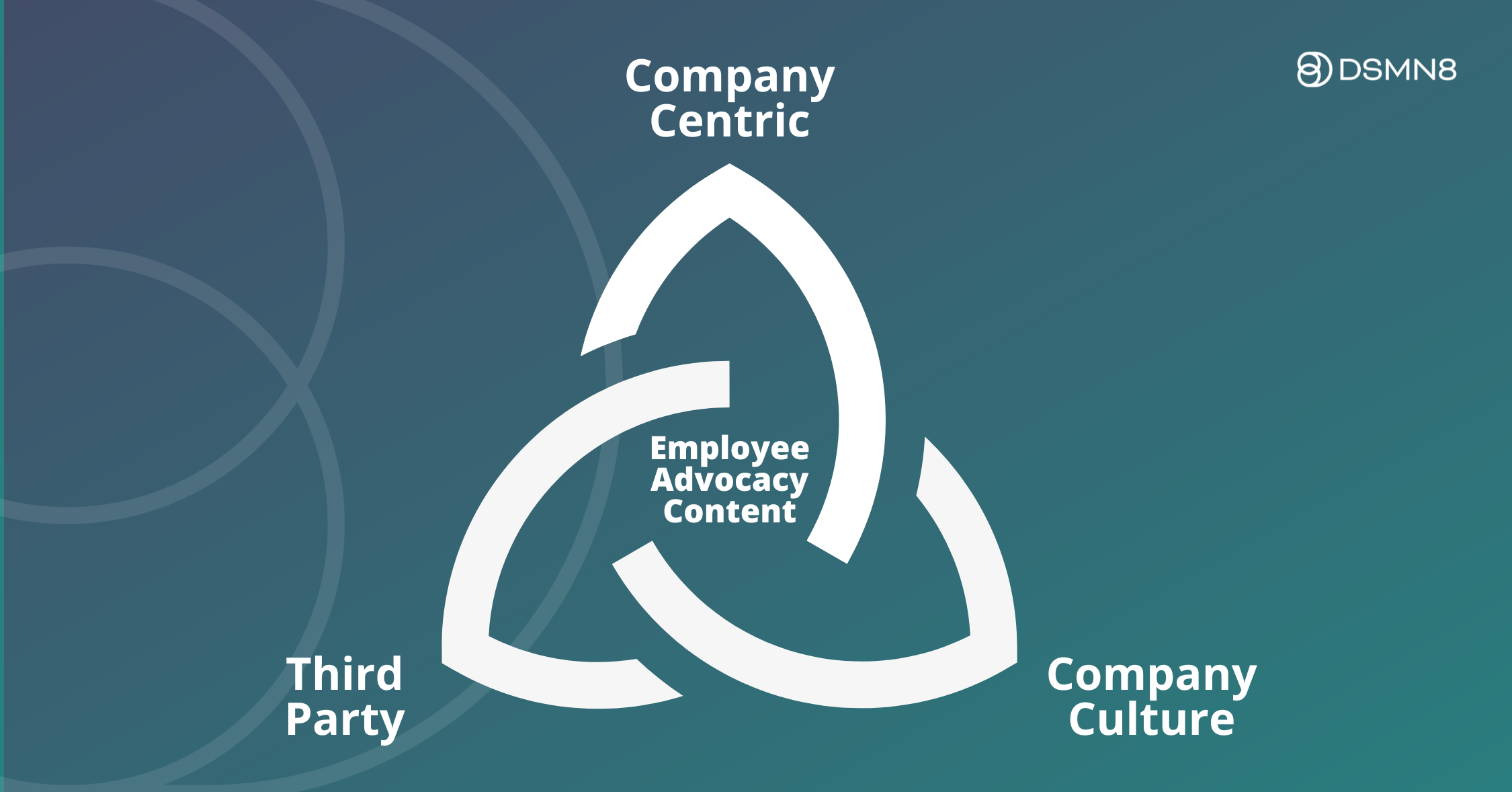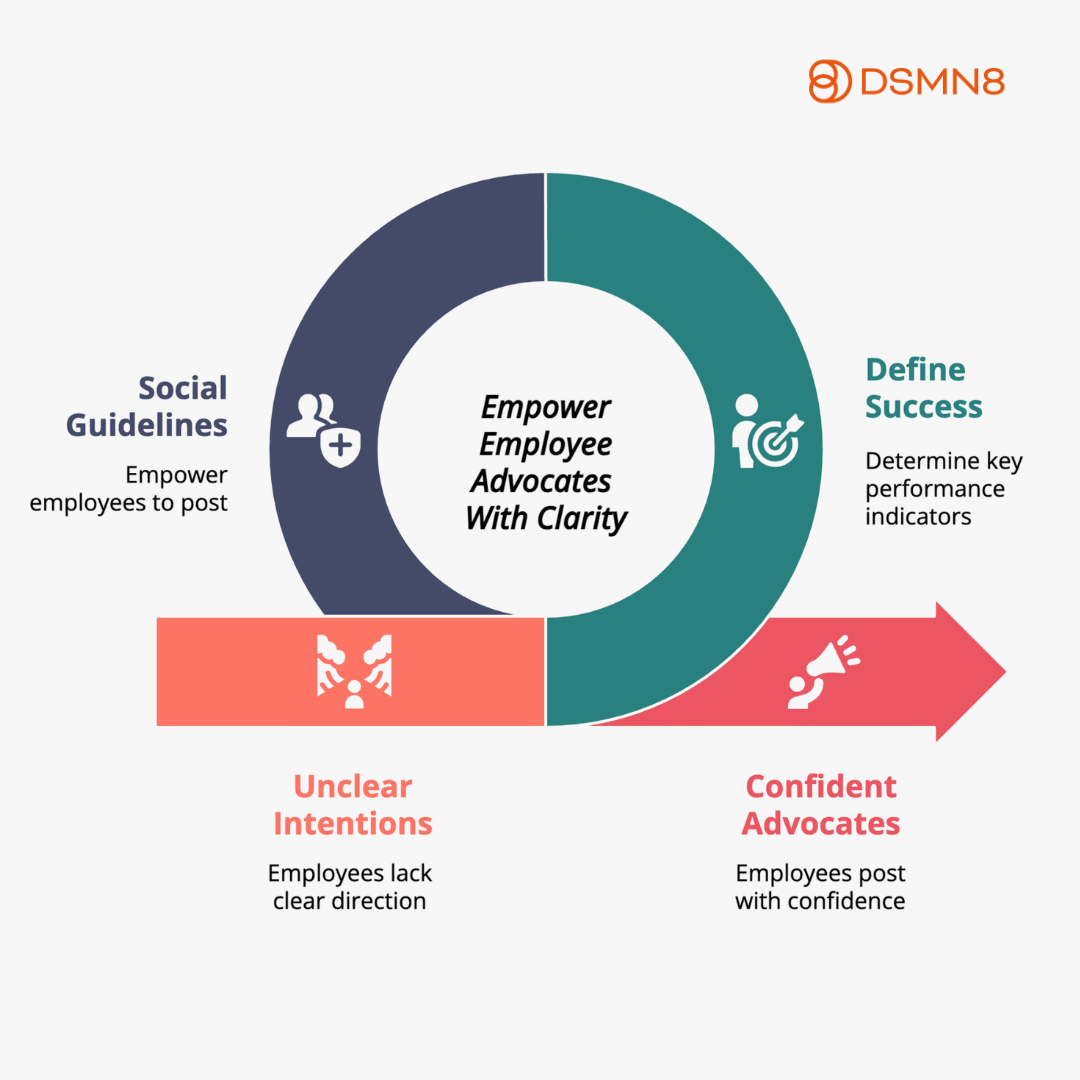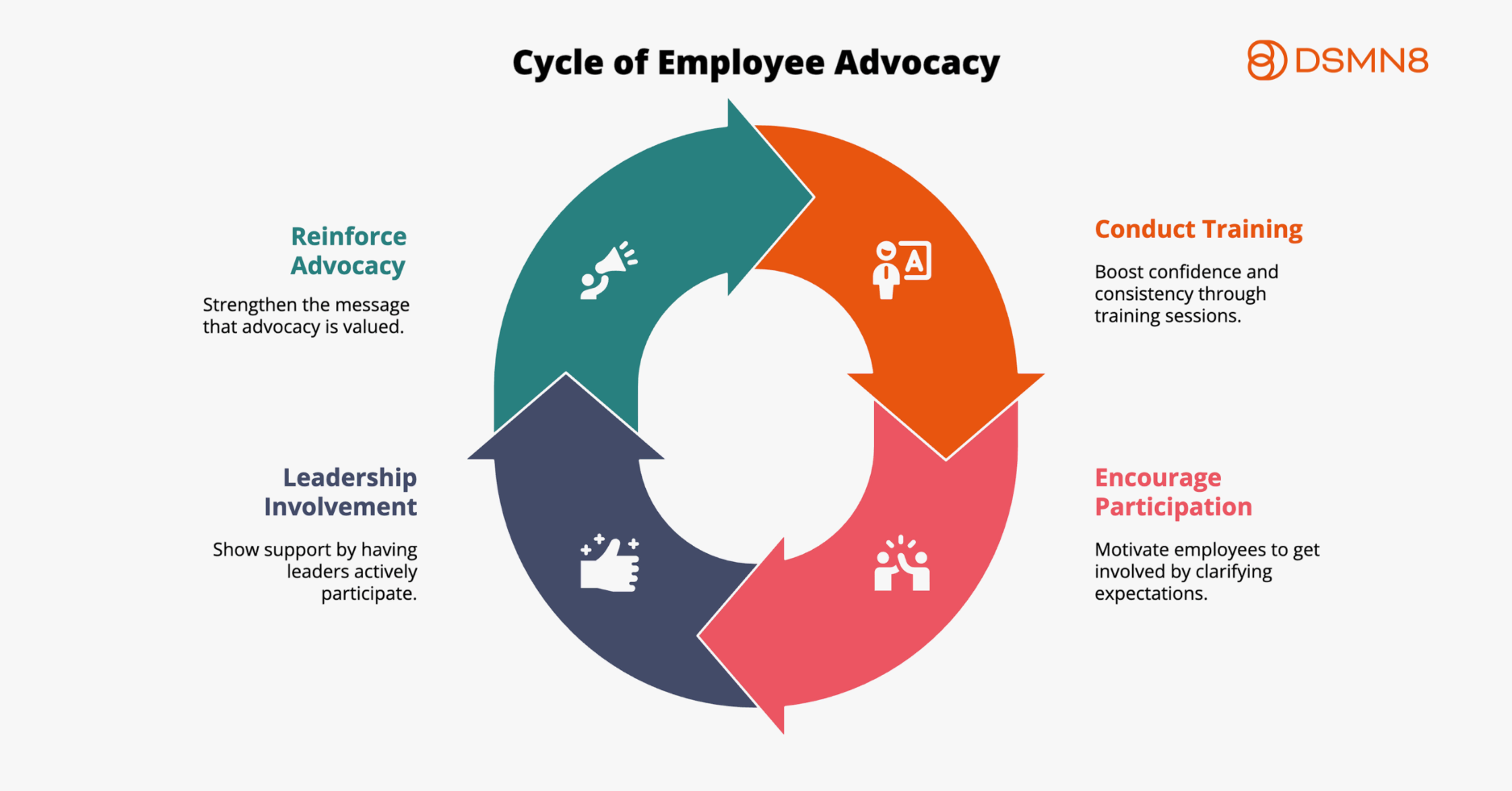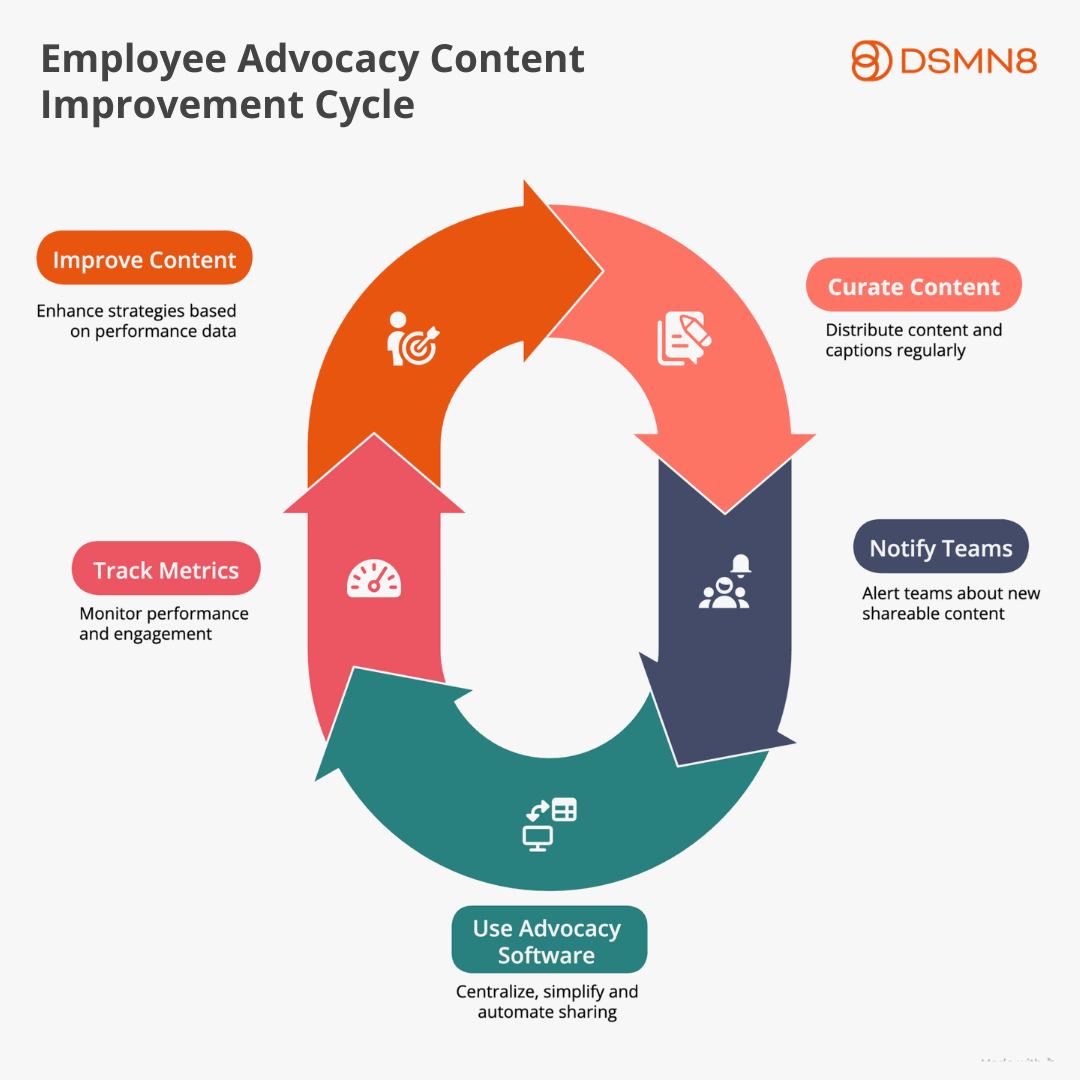
Most companies understand the value of employees sharing branded content online. After all, employees collectively have 10x more followers than the company itself, and their posts typically generate twice the engagement.
But despite the clear benefits of becoming an employee advocate, many businesses still struggle to get their teams involved.
You’re thinking, “Why aren’t employees sharing company content?” Our content is great!
Employees often hesitate to share company content because they’re unsure what’s allowed, don’t see the relevance, or simply aren’t motivated. And without the right support, even the most enthusiastic team members can feel stuck.
Yet when employees do share, the impact is powerful. They’re not just amplifying content — they’re stepping into the role of brand ambassador: someone who proudly represents your values, builds trust with their network, and even influences buying decisions.
In this post, we’ll break down the four most common reasons employees don’t share content and show you exactly how to overcome each one 💪
Barrier 1: Risk
“I don’t know what I’m allowed to share.”
This is the most common concern around employee advocacy. But it’s rooted in a lack of clarity, not intent.
Solution: Set clear goals and give permission 🎯
Start by defining what success looks like. Is your goal to drive traffic? Raise awareness for CSR initiatives? Boost product visibility?
Then, create a simple set of social media guidelines. Not a list of rules, but a helpful resource that empowers employees to post with confidence. Include:
-
Approved topics and sources (e.g. blog, careers page, press coverage).
-
Examples of high-performing posts.
-
Brand tone and visual tips.
Run short training sessions to boost confidence and consistency. Once people know what’s expected, most are happy to get involved.
Keep in mind that employee advocacy starts at the top. When your leadership team actively participates, it sends a strong message that advocacy is encouraged and valued.
I also recommend checking out the podcast episode above, featuring a real-world example of how a brand builds clarity and confidence into its advocacy program. Maike Jansen at Dentsu Benelux shares how they handle brand safety and security concerns.
Barrier 2: Motivation
If employees don’t see the benefit, they won’t make the effort.
Even your most loyal team members are busy. Some may be excited to build their personal brand. Others might respond better to incentives.
Solution: Show value and make it fun 🏆
-
Share how advocacy supports company goals and personal growth (e.g., visibility, career progression).
-
Gamify the process: leaderboards, challenges, small rewards.
-
Recognize advocates publicly — it builds momentum and trust.
Don’t guess what motivates people. Ask. You’ll be surprised how many want to get involved once they feel seen and appreciated.

Barrier 3: Relevance
Employees care about their audiences. If content feels off-brand for them, they won’t share it.
Solution: Let them choose and tailor content ✍️
-
Respect personal boundaries. Remind employees: Your account, your choice.
-
Encourage segmentation: Use LinkedIn and X (Twitter) for professional sharing; personal platforms only if they feel comfortable.
-
Provide a range of content, not just product updates. Include industry news, hiring posts, community stories, and thought leadership. Check out our employee advocacy content must-haves for more ideas.
- Not all content is created equal. To boost shares, focus on creating content that’s valuable, relevant, and easy to engage with. Think behind-the-scenes stories, employee spotlights, helpful tips, or thought leadership pieces.
Advocacy works best when it’s authentic. Empower employees to share what truly resonates with their voice and audience.
Barrier 4: Accessibility
Even the most willing employee won’t share if it’s too time-consuming.
Solution: Make sharing quick and seamless ✅
-
Send regular internal newsletters with top content and pre-written captions.
-
Use tools like Slack or Teams to notify teams of new shareable content.
-
Invest in advocacy software (like DSMN8) to centralize and simplify sharing across platforms.
- Track key metrics like shares per post, engagement rates, referral traffic, and participation levels to measure your program’s success and improve over time.
You don’t need to bombard people. Just make sharing as easy as possible.
Conclusion
By addressing risk, motivation, relevance, and accessibility, you create the foundation for a thriving advocacy culture.
Start small. Keep it simple. Celebrate wins. Over time, your team will evolve from reluctant participants to proud brand advocates.
Ready to see DSMN8 in action?
Book a free demo and discover how easy it is to turn your employees into powerful brand ambassadors.
Emily Neal
SEO and Content Specialist at DSMN8. Emily has 10 years experience blogging, and is a pro at Pinterest Marketing, reaching 1 million monthly views. She’s all about empowering employees to grow their personal brands and become influencers.






